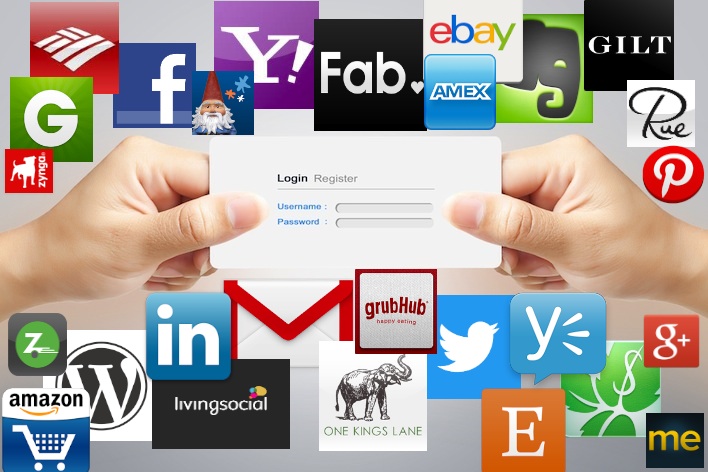Do you know how many accounts you have with various websites and online services?
[aditude-amp id="flyingcarpet" targeting='{"env":"staging","page_type":"article","post_id":622700,"post_type":"story","post_chan":"none","tags":null,"ai":false,"category":"none","all_categories":"security,","session":"C"}']The answer is probably no, and that is why you — yes, you — are wide open to losing personal information.
Not knowing what data you have out there is a dangerous game. If your accounts share any common data at all, hackers who get into one of them can leverage that account to get into others. Shared passwords, shared secret answers for requesting password resets, even basic data like your address and social security number can be lurking on little-used accounts you haven’t logged into for months. Each one is a potential target.
AI Weekly
The must-read newsletter for AI and Big Data industry written by Khari Johnson, Kyle Wiggers, and Seth Colaner.
Included with VentureBeat Insider and VentureBeat VIP memberships.
That’s why the first step to increasing your security is to do a personal survey of all your online accounts, which at this point, you unfortunately have to do manually. Just going through your email and to see who is pushing you marketing material is a good way to get started.
If you’re like me, the number of accounts you have is far higher than you’d expect. I expected to find 20 accounts in my name; instead, I found 114.
That’s a lot of personal information I didn’t know about floating around the web. Indeed, LastPass, an online password manager, told me that the average LastPass account holds an average of 100 accounts.
“I probably have at least 150 accounts that I regularly use at least once or twice a year. I think it’s a massive problem,” said Shane Green, the chief executive officer at Personal, in an interview with VentureBeat. “We have literally infinite pieces of information about us spread out all over the Internet.”
Personal is one of Silicon Valley’s answer’s to poor account security and password management. The company offers a service to store all of your login credentials. Each credential is individually encrypted and accessible only by you — not even Personal can see your information. That means instead of 150 accounts, you only have to worry about one: Your Personal account.
The company recently released a feature called Fill-It that could help you with account organization even further. The feature lets you take encrypted information, such as your credit card and billing address, out of Personal and share it temporarily with another site, such as Amazon.com. Amazon never gets to keep that information, but instead it is able to temporarily read your Fill-It, complete the transaction, and forget everything it ever saw.
[aditude-amp id="medium1" targeting='{"env":"staging","page_type":"article","post_id":622700,"post_type":"story","post_chan":"none","tags":null,"ai":false,"category":"none","all_categories":"security,","session":"C"}']
If you’re not into the big, scary encryption, however, and want something a little simpler, some simple maintenance might be the answer. Spend two or three hours tracking down all your accounts. After you’ve written them all down, separate them into categories of importance based on the information they hold.
- Highest priority: Your bank accounts and email accounts.
- High priority: Any accounts that hold credit card information is also of high importance. If you have stored your credit card on your favorite retailer’s website — or any other site — include it here.
- Medium priority: Any social media, note-taking, or content-storing apps should also be closely watched.
- The bottom rung: Those one-off daily-deals sites you’ve never used, magazines, sites that you signed up for just to enter a contest, and the like.
After you’re done sorting, then purge, baby, purge! Get rid of anything you don’t use weekly: Delete the account outright, or log into the account and delete all the personal information you don’t feel comfortable with.
If you really want to dig in deep, research what happens to your data when you close an account so you know how long your information is sitting out there.
Then come up with a password scheme: unique, difficult passwords for each site in the top tier and shared, easier passwords for the bottom tiers. You can save these passwords on websites such as LastPass if you have a lot of high priority accounts. But remember that services like LastPass and OnePassword protect all your passwords by using a password. You can also sign up for Personal’s beta.
[aditude-amp id="medium2" targeting='{"env":"staging","page_type":"article","post_id":622700,"post_type":"story","post_chan":"none","tags":null,"ai":false,"category":"none","all_categories":"security,","session":"C"}']
“I do, however, think protecting all your passwords with a password [if you use a complex password] is radically better than how people do it today,” said Personal’s Green.
So, get account counting, folks. And tell us in the comments how many you find.
Created by Meghan Kelly; Original login image via Shutterstock
VentureBeat's mission is to be a digital town square for technical decision-makers to gain knowledge about transformative enterprise technology and transact. Learn More

